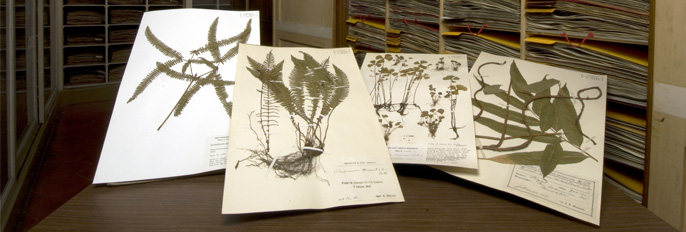Italian Central Herbarium

The Italian Central Herbarium has its roots in the Imperial and Royal Museum of Physics and Natural History, which contained botanical collections but paid little attention to dried plants and herbaria in general. The scientific terrain was however fertile to accommodate Filippo Parlatore’s proposal to establish the first national scientific herbarium devoted to the study of systematics and phytogeography in our country: The Herbarium Centrale Italicum (1842). In addition to donating his personal collections, the founder made an appeal to the botanists of the time to send their samples; after just four years the initial consistency of the collection had already tripled, with about 110,000 samples and 59,000 species represented.
Today the Herbarium is the most important Italian botanical collection and among the top ten in the world. It is consulted every year by hundreds of botanists, both Italian and foreign. The wealth of materials and the ever-increasing number of requests for consultation have made the computer cataloguing of the names present and the digitization of the standard samples a must have in order to make them available online.
The Herbarium is divided into phanerogamic collections, or seed plants, and cryptogamic collections, which include the heterogeneous set of organisms without flowers and seeds. The former has more than 4 million samples, currently housed in six large rooms. The cryptogamic collections include over 600 thousand specimens and originate in the Medici era with Pier Antonio Micheli, father of mycology. However, the real precursor of the herbarium was Emilio Levier, who originated further systematic subdivisions (mosses, lichens, mushrooms, algae, etc.).
Heads of collections Lorenzo Cecchi | Anna Donatelli | Lorenzo Lastrucci
Learn more on the Herbarium Centrale (English text at the bottom of the pages)
Cuccuini, P., The Erbario Centrale Italiano (E.C.I.) or Herbarium Centrale Italicum (H.C.I.), in: Raffaelli, M. (eds), 2009, The Museum of Natural History of the University of Florence: The botanical collections, Firenze University Press
Learn more on the cryptogamic herbarium (English text at the bottom of the pages)
Cuccuini, P., The cryptogamic herbarium, in the work cited
Last update
07.09.2021
